The 2010s: the decade’s most shocking moments, from Kevin Rudd to Donald Trump
From royal weddings to Donald Trump’s victory, it has been a decade of non-stop shocks and surprises – and none of it we saw coming.
National
Don't miss out on the headlines from National. Followed categories will be added to My News.
- The most genius words of the 2010s
- The 10 best AFL games of the decade
- What we Googled in the 2010s revealed
- 10 biggest sporting comebacks of the decade
History has no respect for calendars.
Things spill messily from one era to the next without regard for the artificiality of years, decades, even millennia. It’s like a talentless infant trying to colour in with a crayon: the lines are there, but largely ignored.
And so it is that this past decade’s most transformative forces, the smartphone and social media, both actually date back to the noughties.
Facebook launched in February 2004, and Apple released the iPhone in June 2007, but both would go on to shape this decade in ways that nobody predicted before January 1, 2010.

The smartphone and social media would be blamed for starting revolutions, encouraging terrorism, disrupting and even destroying industries, prompting dysfunctional behaviour and making us all dumb.
They also brought billions of people together, created new jobs and made pretty much everything more efficient.
And none of it we saw coming.
Social commentator Bernard Salt says this is typical.
“Whenever you ask people about the next 10 years, the great temptation is to say ‘well it’s just going to be like today, but even more so’,” he says.
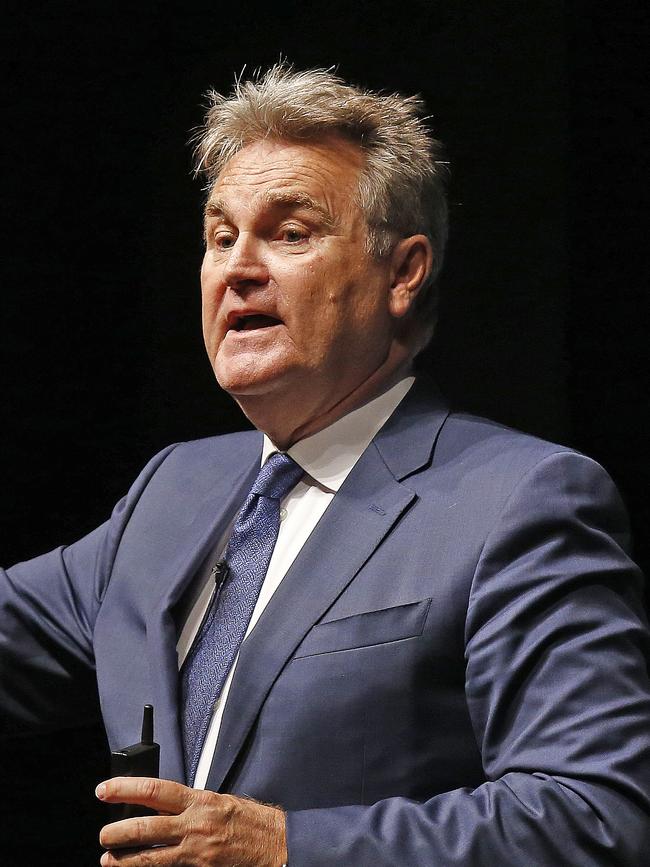
“And yet with the advent of social media and the iPhone in the late 2000s, I don’t think anyone was saying that there’s going to be powerful new technology that completely reorganises society. There was an inflection point … that really did have an impact on the following decade, but no one I know of and no mega trend forecaster was brave enough or insightful enough to make those observations.”
Then again, the unexpected was one of the decade’s dominant themes. Donald Trump’s election victory, Brexit, ISIS, the #metoo movement, Caitlyn Jenner’s gender transition, Michelle Payne’s Melbourne Cup victory, Kanye West finding god, the man-bun … time and again the 2010s found new ways to shock us.
Just ask Kevin Rudd.
AUSTRALIAN POLITICS: A WILD RIDE
This article started with the bold assertion that events don’t fall neatly into decades, and an even bolder metaphor about youngsters with crayons – but sometimes, those infant artists do stay within the lines, and history is timetable-perfect.
Such is the case with Australian politics in the 2010s.
“The revolving door of Prime Ministers we’ve seen in Australian politics marks the beginning of this decade perfectly,” says Dr Paul Williams, senior lecturer at Queensland’s Griffith University. It was a period of volatility, he adds, the likes of which Australia had not seen since the late 1960s.
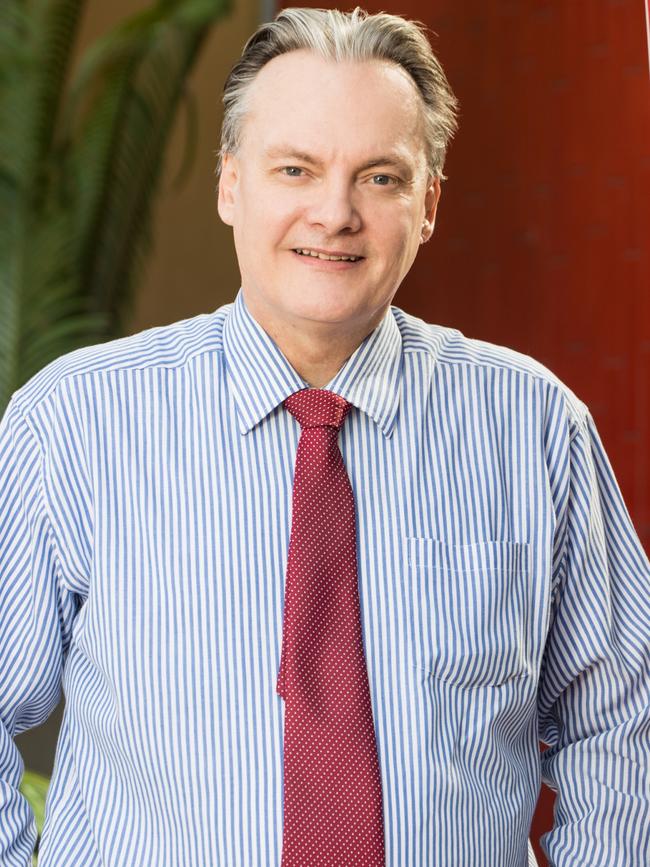
When Julia Gillard successfully challenged Kevin Rudd’s leadership on June 24, 2010, the nation got its first female prime minister, both sides of politics got a taste for blood, and the unthinkable became commonplace in Australian politics.
Prime Ministerial tenures shrank. Gillard lasted three years before a desperate Labor went back to Rudd; renovation works prevented Tony Abbott from even moving into The Lodge in his two years in the top job; and Malcolm Turnbull didn’t quite make it to three years before he was challenged by Peter Dutton, and eventually ceded the Liberal leadership to Scott Morrison.
The cost of all this was a massive loss of public trust in institutions, which “really fell away after 2010”, says Dr Williams. “The electorate sees the games political parties play, and it underscores the sense that the system doesn’t work for them,” he says.
“The removal of Kevin Rudd was like a punch to the nose, and in some respects it still hasn’t healed.”
Rudd’s political assassination also proved to be an enormous own goal for Labor, despite the fact that they squeaked back into power at the August 2010 election.
“The entire decade has been the federal Coalition’s. Labor was always on the back foot from mid 2010,” Dr Williams says.

Leadership instability was a feature of the decade at the state level, too. New South Wales, Victoria and the Northern Territory all had four premiers or chief ministers, while Queensland, Tasmania, South Australia and the ACT had three. Only Western Australia had two.
Electoral volatility was the new normal. Campbell Newman swept Labor from power in Queensland in a landslide in 2012, only to lose government, and his own seat, three years later.
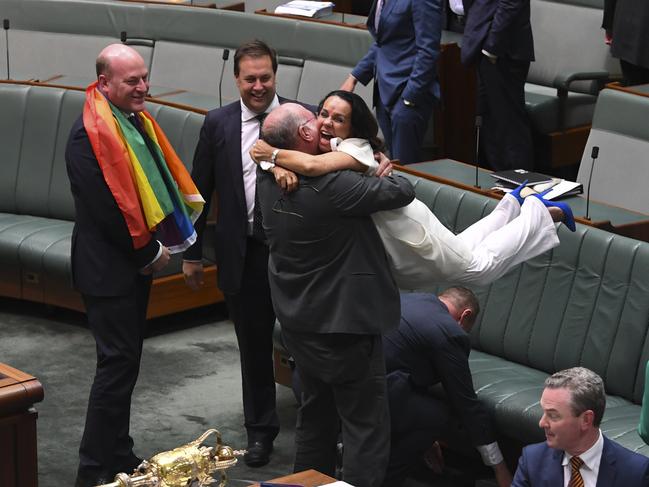
The sound and fury dominated, but some long-term governing got done. Same-sex marriage was legalised in 2017, the National Disability Insurance Scheme was delivered in 2013, and various pieces of anti-terror legislation were introduced, though the decade ends with Australia’s media taking an unprecedented unified stand against the repressive government secrecy these laws have engendered.
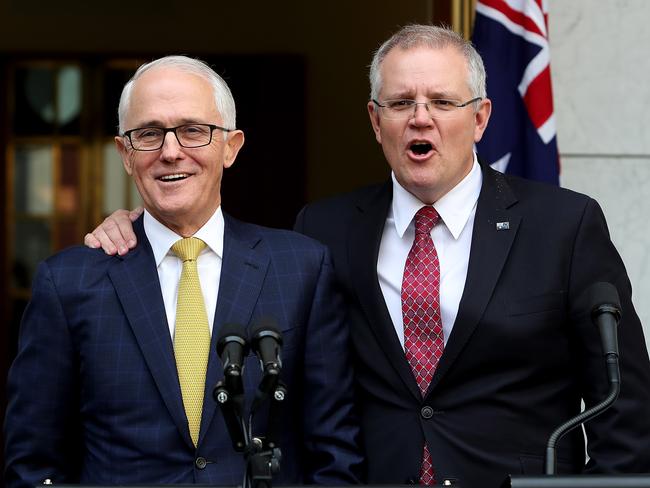
Bernard Salt believes the decade’s royal commissions – there have been seven in total, covering sexual abuse in the churches, elder abuse in the aged care sector, and misconduct by the banks, among other issues – were also significant moments for the Australian public.
“It’s a decade in which we have turned … and we’re suddenly aware of the kind of society we don’t want to be,” he says.
“Many of the royal commissions have shaken middle Australia. This is not the Australia we want; we want a fairer, more balanced, more considerate Australia going forward. The royal commissions have played a part in that shift of things.”
THE REIGN OF TERROR
If evidence of abuse and corporate misbehaviour shook Australia during the 2010s, terrorism created altogether new levels of trauma.
On a suburban London street on the afternoon of May 22, 2013, two Islamic extremists aimed their speeding car at English soldier Lee Rigby, ran into him, stabbed him repeatedly and attempted to decapitate him with a meat cleaver. Mobile phone footage captured the whole gruesome incident, including its aftermath, when one of the attackers attempted a sick justification on camera, his bloodied hands still carrying knives.

“The only reason we’ve killed this man today is because Muslims are dying daily by British soldiers,’’ the attacker said.
It was a horrifying harbinger of what was to come, in both its audacity and methodology.
Although the world was no stranger to terror, as war dragged on in Iraq and Syria we became familiar with the terrible MO of Islamic State: vehicles used as ramming devices; the predilection for maximum horror in the most public spaces.
In December 2014 the horror came to Australia, when an armed militant laid siege to Sydney’s Lindt cafe, in Martin Place across from the Channel 7 TV studios. Two innocent people died, but the images of terror that went all over the world were eventually supplanted by the optics of the virtual carpeting of Martin Place with flowers left as memorials.
France and Belgium were hit, again and again. In January 2015 two gunmen stormed the Parisian offices of Charlie Hebdo, killing 12 and wounding 11, after the publication ran a cartoon of the prophet Muhammed. In November that year jihadists launched simultaneous attacks at a concert venue and other locations around the French capital, killing 130 and wounding 494. Co-ordinated attacks in Brussels in March 2016 killed 32 and wounded 300. And on Bastille Day in 2016, a lone trucker ploughed through crowds in Nice, killing 86 and injuring 458.

The same sort of madness came to the heart of Melbourne on January 20, 2017, when lunchtime shoppers on Bourke Street were mown down by a crazed driver. Six people died; another 30 were wounded.
Ramming incidents dominated the entire year. A lone wolf targeted London’s Westminster Bridge in March, killing five, while a group attacked London Bridge and its adjacent Borough Market in June, murdering eight (including two young Australian women).
There were similar tragedies in Stockholm, Toronto, Paris, New York and Barcelona (where one of the 13 victims was a young Australian boy).
And terror returned to Melbourne’s CDB just before Christmas, when another ramming incident killed one and injured 17 others.
Arguably the most horrifying moment of the entire godforsaken year came in May, when a suicide bomber detonated a device during an Ariana Grande concert in Manchester, killing 23 people (many of whom were young) and injuring 139.
According to Jacinta Carroll, Senior Research Fellow for Counter Terrorism and Social Cohesion Project at ANU, the unprecedented spike in terror incidents in 2017 was linked to the demise of the IS caliphate in the Middle East.

“After the fall of Mosul [in 2014], ISIS changed its behaviour,” she says. “It became a terror organisation under siege, and suddenly the slick propaganda started changing.”
The message changed too. From targeting would-be jihadists with an invitation to “come and join the caliphate,” ISIS started imploring its followers to “pick up the fight wherever you can,” Ms Carroll says.
She points out that as bad as the decade was, it could have been so much worse, with police and security agencies disrupting 15 “mass casualty plots” in Australia since 2015 alone.
But Islamic terrorism was not the only kind we had to contend with in the 2010s.
A white nationalist massacred 88 people (mostly young) in Norway in July 2012, and an Australian extremist live-streamed a gun rampage at two mosques in Christchurch, New Zealand in 2018, killing 51 people.
New Zealand’s response to that tragedy showed extraordinary resilience, Ms Carroll says.
“(Prime Minister) Jacinda Ardern went straight to the community, and she used some amazing words; it was really powerful.”

An image of a hijabbed Ardern hugging a Muslim woman was later projected onto the side of the Burj al-Arab in Dubai. Other women in New Zealand wore the hijab for a few days to show solidarity, and a cross section of people, from school students to bikies, turned up at mosques to show their support.
“Because of the way the New Zealand community responded and the way the affected Muslim community responded, Islamic State got no propaganda value out of the attack,” Ms Carroll says.
MYSTERY AND TRAGEDY
Beyond terrorism, the decade shocked us in ways that we could never have countenanced before.
The disappearance of Malaysia Airlines Flight MH370 one hour into a flight from Kuala Lumpur to Beijing early in the morning of March 8, 2014, has proven to be the decade’s most enduring and expensive mystery. Although debris from the plane would eventually wash ashore in Africa, what happened on that plane remains unknown.
Could a captain really have taken all 289 people on board to their deaths on purpose? Was that even conceivable?

That question was answered in the most disturbing way, one year later, when the co-pilot of a Germanwings Airbus en route from Barcelona to Dusseldorf locked the pilot out of the cockpit and deliberately crashed the plane into the French Alps, killing all 150 people on board.
Malaysia Airlines was hit with a second calamity on 17 July 2014, when Flight MH17 from Amsterdam to Kuala Lumpur was shot down over Ukraine by Russian-backed separatists.
All 298 people on board were killed, including 40 people who called Australia home.
Despite protestations from the Australian, Dutch and Malaysian government, and the identification of suspects, the perpetrators of the crime have never been brought to justice.
America’s gun culture heaped tragedy on top of tragedy throughout the decade.

Those who thought the gunning down of 20 kids aged six and seven at Sandy Hook Elementary School in Connecticut (along with seven adults) in May 2012 would turn the tide in America’s firearms debate were proved wrong.
A lone gunman’s massacre from the room of a Las Vegas casino in October 2017 left 59 dead and an astounding 527 people injured – and still gun laws remain unchanged.
According to University of Sydney research, more than 30,000 people have died because of firearms in the US in each year since 2010, and the situation is only getting worse: rates of gun death rose from 10.26 per 100,000 people in 2010 to 12.21 in 2017.
When unarmed Australian woman Justine Damond was shot dead by the police officer she called for help after hearing screaming outside her Minneapolis home in 2017, the enormity of America’s gun problem was brought close to home.
Australia had its own share of disturbing crime, including heartbreaking family killings in Cairns in 2014 and WA’s Margaret River in 2018.
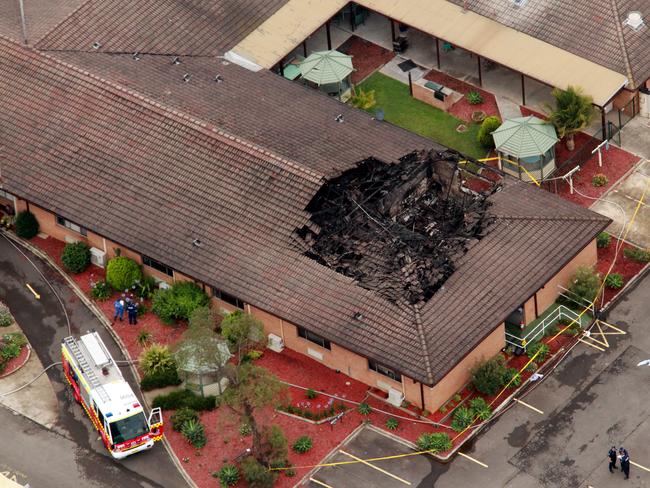
The deliberate torching of a nursing home in Sydney’s Quaker’s Hill in 2011 was one of the decade’s worst crimes, with 11 vulnerable patients dying.
We watched the horrible destructive power of fire again in 2017, when an inferno engulfed the Grenfell Tower apartment block in London, killing 71 residents.
And tragedy struck in a most unexpected place in 2016, when four visitors to the Dreamworld Theme Park on the Gold Coast were drowned when the Thunder River Rapids ride malfunctioned.

The stories of Australians in trouble overseas continued to intrigue us, perhaps even more so after Indonesia executed Bali Nine ringleaders Andrew Chan and Myuran Sukumaran by firing squad in 2015.
Fellow Bali Nine member Renee Lawrence became the first – and so far only – member of the syndicate to be released, in 2018, while Schapelle Corby returned to Australia at last in 2017.
NOW SCREENING
An overwhelming number of readers of this article did two things during the 2010s: they bought their first smartphone, and they gave up their home phone.
It took Australians a few years to embrace the new devices after the June 2007 launch of the iPhone, but a 2017 report from Deloitte showed that 88 per cent of us now own a smartphone, and the rate was expected to rise still further.
The same report revealed that a landline phone – a staple of the Aussie family dwelling for decades – is now found in only 14 per cent of homes.
Research from research agency Gartner shows the jawdropping scale of global smartphone sales: an average of 1.5 billion units sold each year, over the past four years.

We said goodbye to the widespread distribution of telephone boxes and printed directories, and said hello to apps, in the most profound way. Apps to keep you fit, to meet new people, to read newspapers, to order your morning coffee, to see what you might look like when you’re old, or to chase virtual cartoon characters across real-world landscapes. There are now nearly 2.5 million apps on Google Play.
New business ventures emerged, disrupting entire industries.
Uber turned the taxi industry on its head. Airbnb challenged the primacy of hotels in the tourism sector. Airtasker and other similar platforms prompted the rise of the “gig economy”, through which a reported 7 per cent of Australians now find work.
Smartphones turbocharged the decade’s other big technological trend: social media.
Facebook had an estimated 500 million users in 2010, and at the decade’s end that number is closing in on 2.5 billion. The site claims that this year, 16 million people were active on the site in Australia every month.
Instagram launched in October 2010, got acquired by Facebook in 2012, and now counts one billion active users worldwide.
In 2009, Facebook became the first of the big social media platforms to introduce a “like” function. And that changed everything.
DECADE WITH AN IDENTITY CRISIS
One of the oddities of the 2010s is that they never had the strong stamp of identity that other decades had. Think of the unmistakeable silhouettes of past eras: the funky flares of the 1970s, or the big hair and power suits of the 1980s.
“It’s been a neutral decade in some respects, but things become clearer in hindsight and the perspective of difference, when you can see the contrast,” offers Bernard Salt.

While trends and fads have come and gone, the decade was notable for a remarkable sense of consistency, says Vogue Australia editor Edwina McCann – and Instagram is the reason.
Bold colours and garments with prints and patterns tend to get a better response on Instagram – more likes – and this drove the major fashion brands to “offer print and pattern consistently every season,” she says.
“Instagram influencers have also been important in that they have translated the messages of designers to a really broad audience, but a lot of the influencers have been less than loyal to single brands, and that’s been problematic,” she says.
The need to keep those social media likes coming also prompted another fashion trend of the decade: endless novelty.
“People didn’t want to be seen more than once in an outfit, and that gave rise to the rental market in luxury fashion in particular,” McCann says.

Conversely, environmental concerns drove many to speak out about out-of-control consumerism, and re-wearing garments came to be seen as a “badge of honour” for some celebrities including Kate Middleton and Meghan Markle.
The Duchesses of Cambridge and Sussex were also at the vanguard of one of the decade’s most distinctive and unexpected trends: feminine modesty.
Dresses went full-length. Necklines climbed higher. Arms got covered up. It was partly a reaction, McCann notes, to the parallel trend targeting women: the highly-sexualised, bare-skin and body-flaunting look exemplified by the Kardashians.
“A lot of women were uncomfortable with that, and so we saw a more demure dressing emerging,” she says. “It’s really been the decade of the dress; women reclaiming a kind of femininity, and being comfortable wearing that into the boardroom and not feeling like they have to dress like a man.”
Men, meanwhile, started ditching their ties, and even suits, and facial hair was in like never before, prompting endless hot takes from online commentators claiming we had reached “peak beard”.
GENDER ON THE AGENDA
The contract between the sexes – if any such thing exists – got extensively rewritten during the decade thanks in large part to the #metoo movement, which called out the widespread nature of sexual harassment and abuse.
Even before that moment, high-profile men in the entertainment industry were being exposed for their sex crimes.
The cases of Rolf Harris, Bill Cosby, Robert Hughes and Jimmy Saville set the scene for the reckoning moment which came in October 2017 when the first of a litany of allegations surfaced against Hollywood producer Harvey Weinstein. Actress Alyssa Milano encouraged women to reveal if they had ever been sexually harassed or assaulted by simply using the “me too” hashtag, and more than 5 million people did so within 24 hours.
Horror stories of powerful men behaving badly cropped up around the world, curtailing the careers of actor Kevin Spacey and NBC Today show host Matt Lauer among many others.
The decade’s other unexpected gender-related movement was the rise of trans awareness, which crystallised with the public gender transition of Caitlyn (formerly Bruce) Jenner.

The emergence of trans issues ushered in debates about everything from gender neutral pronouns and award categories to signage in public bathrooms and the appropriate age for medical interventions for trans kids.
Gender issues also rose to the fore in sport, particularly in Australia, with individual sports rolling out women’s competitions, some offering equal pay and prize money to men. Previously pushed to the margins, women’s sport marched into prime time TV and onto the sports pages of metropolitan newspapers.
In Australia the trend was aided by a remarkable run of outstanding female athletes, many of whom became world champions in their sport: Sam Kerr in football, Sally Pearson in hurdling, Torah Bright in skiing, Stephanie Gilmore in surfing, Michelle Payne in horse racing and Ash Barty in tennis.

Drugs and doping continued to dominate world sport. Lance Armstong finally confessed to doping in 2013, while the use of performance enhancing drugs rocked both the AFL and the NRL.
Australian sport’s biggest scandal came late in the decade, when cricketers Steve Smith, David Warner and Cameron Bancroft were found guilty of ball tampering during a test match in South Africa. All three returned to competition after serving bans, and Smith went on to be the unquestioned hero of the 2019 Ashes tour, smashing out one sensational batting performance after another.
DON’T LOOK AWAY
Technology transformed the way we entertained ourselves in the 2010s, with streaming services turning tablets and mobile phones into portable TV screens, and Spotify making CD collections redundant.
A barrage of unexpected headlines, including Donald Trump’s election victory in 2016 and the result of Britain’s Brexit referendum in 2017, kept us glued to our screens for updates.
There was fun stuff as well. Who could forget the moment in 2015 when the wrong Miss Universe was announced as the winner? And who would have dreamt that a similarly mortifying moment would occur at the 2017 Oscars, when Faye Dunaway and Warren Beatty mistakenly announced that La La Land, rather than Moonlight, had won the award for Best Picture?
The royal family kept us entertained for most of the decade, with two major weddings
(Prince William and Kate Middleton in 2011, Prince Harry and Meghan Markle in 2017) and the births of no fewer than four royal heirs in George, Charlotte, Louis and Archie.

Interestingly, however, one of the decade’s biggest royal news stories was the 2017 announcement that Prince Philip would be retiring from official duties. The advance notice of the announcement became a global online sensation in its own right, with many believing the palace was preparing to tell the world that the Queen’s 96-year-old husband was in fact dead.
He remains in decent health, despite a car crash scare in January this year; an incident which precipitated a horror year for the royal family.
By year’s end, a growing rift between Princes William and Harry had become evident, and Prince Andrew had been widely and justifiably shamed for his friendship with the now deceased paedophile Jeffrey Epstein.
We also got a fill of royal drama from the Netflix series The Crown, one of the decade’s spectacular streaming TV successes.
The biggest TV hit of the decade, of course, was Game of Thrones. This eight-season fantasy epic combined sex, ultraviolence, narrative twists (you’d never know which character was going to die next), and broke records for both streaming and piracy.
In film, the Marvel Cinematic Universe dominated the box office, its 21 (!) films of the decade garnering more than $5 billion. Star Wars also returned with a thrilling new trilogy, and various film and streaming TV offshoots.
On free-to-air channels, we were entertained with an endless run of reality TV. Romance shows such as The Bachelor, The Bachelorette and Love Island surged, while the other staples of the genre – talent, cooking and home renovation shows – largely held their place.
CHANGE: IT’S A-COMIN’
The decade draws to a close with environmental issues impinging on our consciousness like never before. Veganism has boomed, single-use plastics such as bags and straws are being phased out, and fury over perceived inaction on climate change has prompted the rise of militant groups such as Extinction Rebellion.

Bushfires and drought – always a feature of the Australian environment – are being debated with increasing fervour in the context of climate change, owing to their scale and timing. Data from Google shows Australians have sought information on bushfires more than any other trending news topic this decade.
We’ve copped nature’s fury in other ways, too. Floods in Brisbane and other centres in January 2011 claimed more than 30 lives, and the disaster was followed almost immediately by Cyclone Yasi, the biggest storm in Queensland’s history.
Cyclone Debbie claimed 14 lives in March 2017. Another five died after widespread flooding in Townsville this year.
Flooding hit the NSW Hunter Valley in 2015, killing three, while many of us learnt of an entirely new environmental threat in November 2016 when a thunderstorm in Melbourne caused breathing problems for asthmatics.
Although similar incidents had been recovered previously, the scale of the event was completely off the charts.

The official report revealed the storm caused a 672 per cent increase in respiratory-related presentations to public hospital emergency departments in Melbourne and Geelong. Nine people lost their lives because of a storm.
In a time when environmental disasters are predicted to hit us with greater frequency due to climate change, the Melbourne thunderstorm was a sobering reminder of how unpredictable those extreme weather events are likely to be.
Whatever else can be predicted of the next decade, it seems reasonable to presume the effects of climate change will play an even greater role. Exactly how those effects manifest – well that’s anybody’s guess.
